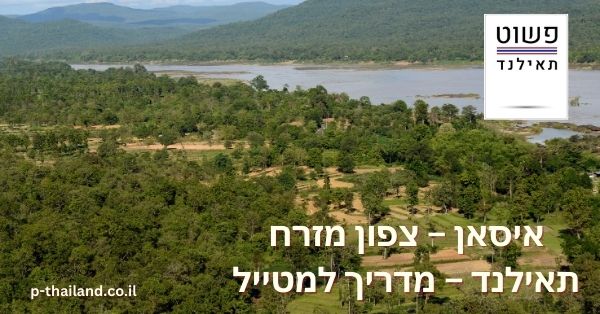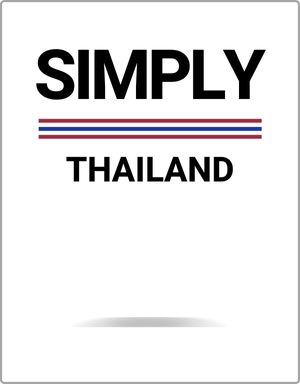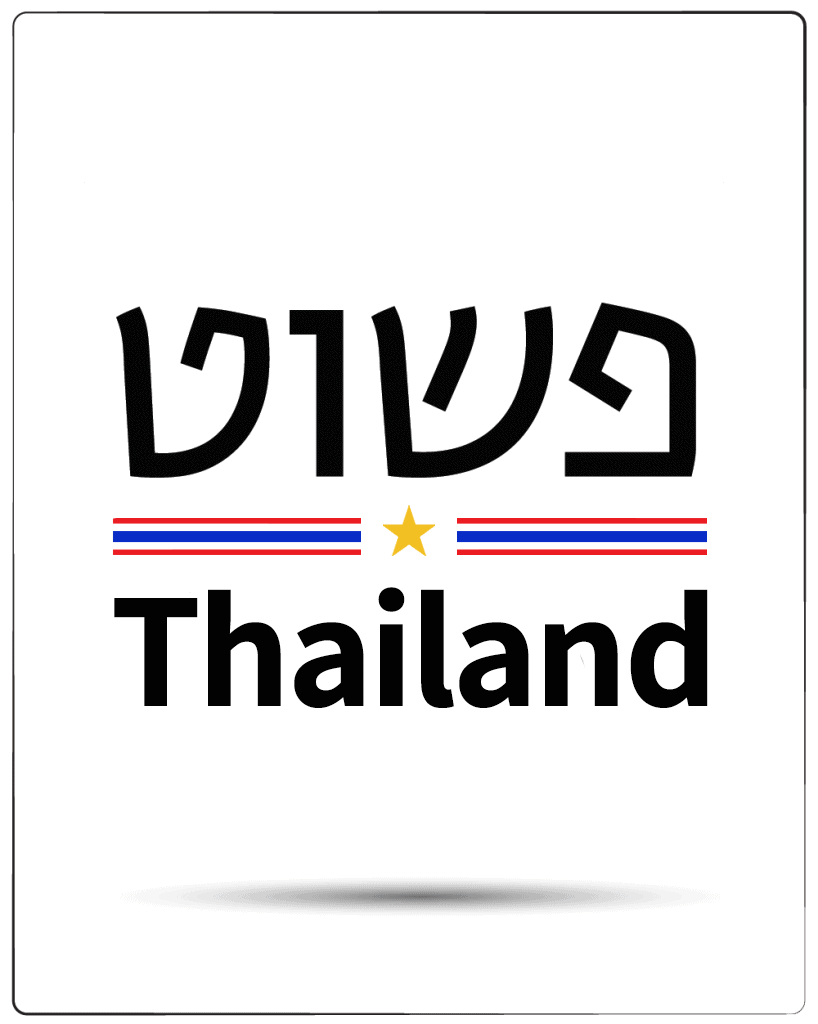Isan It is the name of the northeastern region of Thailand, which has 19 districts, some of which share a border with neighboring countries - Laos and Cambodia. The main attraction in the area is The national parks And besides they have quite a few Temples and historical sites But they attract mainly locals, while less tourists frequent the area, which is considered relatively poor.
The Isan area offers a completely different experience than what you imagined when you flew to the Kingdom of Siam, but it has its own advantages and for those who want to get to know the real Thailand that has not yet been commercialized and dedicated itself to the tourists - this is definitely an area that you should visit. In the worst case scenario, you will have the chance to travel back in time to the fascinating past of Thailand and absorb some of the cultural wealth that the region absorbs due to its proximity to neighboring countries.
This special region is a region that is mainly farms and villages, small and undeveloped cities (from an architectural point of view, among other things) and also spicy and well-seasoned food (with dishes, some of the best in Thailand, so they say). This is one of the few places in the country where you can see and experience the local life, without being affected by the tourism of the place or spoiled or damaged by the large influx of the many travelers. It is an authentic place that allows an unmediated encounter with nature, with the people and with the beauty of Thai culture, just as it is.
The food combines several different cuisines. There is a very large Vietnamese community in Udon Thani, after many refugees from it arrived there following the Vietnam-US war. This, as you can guess, is reflected in the cuisine itself and the dishes served, which are based on local spices and flavors that characterize Thai cuisine, but at the same time also the ones that characterize the Vietnamese. There are quite a few restaurants in this region of the country, and it is recommended to stop at the rural restaurants, which are open air. These overlook nature and offer local dishes that are usually stir-fried in a wok over a makeshift stove. The dishes that characterize the Isan region are spicier, than those of Central Thailand and sometimes they also have sour sauces.On the local menu you will find grilled pork neck (Kaw Moo Yahng), the famous papaya salad (Som Tom), sour style sausage (Sai Grok) and more.

The geography of the Isan region
The Isan region is a flat area, as mentioned, much more than the mountainous area of northern Thailand. It does not have the big and prosperous cities, like those in central Thailand, nor does it have beaches. In this place there are many rice fields, corn fields and pineapples along great distances. The Mekong River runs through its northeastern borders and is decorated, here and there, with quite a few lakes. You don't have to make an effort to find beautiful sights when traveling in this area and you can meet the uniqueness of the Isan region in almost every corner of it.
How do you get to Isan?
The Isan region is located in the northeastern region of Thailand. This area is less known by travelers and is also known to be relatively "sleepy" compared to other areas. The most convenient way, although not the cheapest, is using Flight from Bangkok airport. These flights last about an hour and they land in several major cities in Isan. If it is not too far away, you can continue your journey using local public transportation and reach your desired stronghold. For those who prefer to fly, Udon Thani Airport serves most domestic airlines, departing from major cities, including AirAsia and NokAir.
You can also take advantage of train and bus services, which frequently leave for it from other places throughout the country, but it must be taken into account that it is a long journey. If you are interested in stopping along the way in the small towns and villages, you should hire a private driver to drive you to Isan and stop for you at all the special places you meet along the way, which are sometimes missed when you choose the option of public transportation.
Public Transport
a train
There are two local train lines that connect to Hua Lamphong station in Bangkok. One of them towards the north, through Udon Thani (Udon Thani) to Nong Khai near the border with Laos, and the other towards the east through Ubon Ratchathani, which is the same distance from both the northern border of Cambodia and the southwestern border of Laos. Traveling by air-conditioned train departing towards Isan from Bangkok takes an average of 7-9 hours and the average cost of a ticket is 1,000 baht.
Buses
There are two bus routes that go to Isaan and depart from Chiang Mai and Bangkok. The bus tickets and train tickets must be purchased in advance to reserve a seat, there are several websites that allow passengers to order them online (in English) and pay by credit card. The duration of the trip depends of course on the destination you want to reach and the stations where the bus stops, but it is an average of 7-10 hours of travel and the cost of the trip is about 700 baht.
Transportation within Isan
The local roads are mostly paved and those connecting Isan with Bangkok are fast and well maintained. In the central cities you can find roads with several lanes, but in the rural areas there are many roads with deep potholes that make driving and navigation difficult.
If you don't come with Rented vehicle, you can get around using buses that network the entire area, including night lines and in the more remote areas there are simple buses and trucks with seats.
As far as taxis are concerned, this is not a common means and the ones that are found are actually three-wheeled motorcycles that are slightly reminiscent of tuktuks.
Central districts in Isan
This is a large area that includes no less than 19 districts. Among the best sellers you will find:
Nakhon Ratchasima
The district of Nakhon Ratchasima, sometimes also known as "Kurat", is one of the most beautiful districts in the northeastern region of Thailand and is characterized by vaulted temples from the days of the Khmer Empire and many silk factories from which fabrics that are considered the best and most prestigious are exported to the entire region.
The name of the place also made headlines at the beginning of 2020 when the deadliest shooting incident in the country's history took place there, in which a soldier from the Royal Thai Army killed dozens of people and wounded dozens more.
Ubon Ratchathani
The district of Ubon Ratchathani is one of the most culturally diverse districts, and as such the influences of the neighboring countries - Cambodia and Laos, which together with Thailand form the fascinating trinity of the "Emerald Triangle" are evident in it.
The proximity of the countries to each other gives the Ubon Ratchathani district spectacular landscapes in which the color green dominates, temples and places of religion and spirit and many pleasant corners to travel with the whole family.
Buriram
The district of Buriram, in which there is a picturesque town with the same name, is known for the many ancient sites in its area, which attract many visitors, so if you are among the history buffs, you find the world of antiquities fascinating or simply like the atmosphere and silence that surrounds the religious sites - recommended visit the southern part of this district.
Khon Kaen
A district located in the center of Isan and although it has quite a few national history and heritage sites, it is actually considered a symbol of innovation and progress. The capital city of the district with the same name looks like a progressive western city and as such it is full of impressive skyscrapers, colorful signage and is networked with many places frequented by the many young people living in the area - pubs, restaurants and clubs.
During your visit to the area, you will be able to see many financial institutions, educational institutions (including the largest university in the area) and government offices.
Notable stopping points
Although each of Isan's 19 districts has a few sites to visit, the area itself is considered undeveloped relative to other areas in Thailand and if you look at it from the point of view of a tourist visiting the area, it is a place where there are few major attractions and, in contrast, an abundance of agricultural areas and landscapes Savages that have not yet been commercialized.
The northeastern region of the country is a place that is more suitable for those who are not visiting the Kingdom of Siam for the first time or alternatively, For experienced backpackers Those who want to get to know the real Thailand, are not afraid of unpaved roads, stuttering public transportation and the lack of appropriate signage in an international language.
the city of Korat
The main entrance gate to the Isan region, and is the name given to the city of Nakhin Ratchasima. This is a large and affluent city, a city with a large university. Like most Thai cities, it also lacks spectacular and inspiring architecture, but on the other hand - it has many beautiful and special temples, including Wat Ban Rai and Wat Phayap. It is very worthwhile to devote at least two or three days to Korat, before entering the country itself and stopping in other places.
Phimai
An ancient archaeological site, which is often visited as part of a short day trip from Korat. The site was built around the 11th and 12th centuries and has a temple in the center, surrounded by a huge square wall. To get to the temple in the center you have to work on the Naga bridge, through the wall. This special complex, which is also very impressive, attracts mainly locals and school groups.
Nong Khai
Used mainly as a transit point for those leaving or entering Laos. It has very nice cafes and great food and also the possibility to go on a cruise on the Mekong River. Befitting a Thai city, it also has quite a few temples, the most beautiful of which is Wat Pho Chai. The city also has a very special sculpture park, built in 1978, with hundreds of Buddha statues of all shapes and sizes.
Prasat Ta Muan (Prasat Ta Muan)
An ancient historical site, consisting of two large temples built in the 11th century. The first temple is located on top of a hill, so it catches the eye and the attention. It is a beautiful temple surrounded by very ancient archaeological finds, which add quite a bit to its appearance. Its central structure is the place where people pray, with the highlight being the views of the areas, which serve as a perfect backdrop. Another temple in the same complex is a smaller one, which also has four beautiful pools and is surrounded by a high wall. You can tour, as part of a day trip, both temples and if you want you can also rent a bike and go for a ride in the nearby area.
Ubon Ratchathani (Ubon Ratchathani)
A prominent stopping point in the Isan region, which are usually passed on the way to Laos. Beyond a visit to the Buddhist temples in the city, a visit to the famous night market or the national museum, there is not too much to do or see, so you can stop there for a short visit of a few hours if you are on your way to... or on your way from...
Other major sites in Isan
The activity in the area is also one that can draw you towards a fascinating journey that lasts for a week or as long as you want to devote to it - the national parks. There are no less than 26 national parks in the area, including some particularly popular parks where you can enjoy breathtaking views, spectacular flora and rare animals.
Khao yai national park
One of the two best known national parks in the region and in Thailand as a whole and the oldest in the country. The park has rainforests and protected areas where various wild animals such as monkeys, deer, porcupines, bears, otters and jackals. In addition to the animals, you can enjoy bike paths, caves, waterfalls and rich vegetation.
Phu Kradueng National Park
A national park which, although access to it is not easy, is considered the most popular especially among the locals. It is known for hiking trails of varying degrees of difficulty, multitudes of waterfalls and rapids, beautiful viewpoints and a great abundance of plants and animals. Fortunately, this park can be reached by public transportation from many places in the area.
Phu Pha Man National Park
A national park located as a forested area and as such is full of mysterious caves, magical waterfalls and steep cliffs. Lovers of nature, landscapes and animals will have no trouble finding many corners in the park to admire, but the highlight is without a doubt the Klang Khao cave, which is 10 km long and thousands of bats come out of it at nightfall. In other caves in the area you can see beautiful stalactites, wall paintings and more.
Phu Wiang National Park
This national park is known for dinosaur fossils that were discovered in 1976 and they are the ones that gave it the image of a prehistoric park in which there are ancient caves, ancient animal bones, tropical vegetation and quite a few animals - mainly winged animals but also deer, various rodents, porcupines and wild cats.
Nam nao national park
One of the most beautiful national parks in Thailand and is considered one of the most important in the region. The park stretches across tropical forests, bamboo forests and banana groves, with hiking trails passing through them, and if you're lucky, you can observe the wild animals that live in the area - elephants, monkeys, deer, bears, wild boars and, according to rumors, even tigers.
Khmer temple Phimai Historical Park
The ancient site of Pimai is a unique ancient site with the largest Hindu temple in Thailand and among the oldest. The temple dates back to the 10th century AD and despite its extreme age has been well preserved over the years and as such attracts many visitors, including religious and spiritual people as well as history buffs.
Phanom Rung Historical Park
A historical park with a complex of buildings that together is a reconstruction of a Kamri temple which was built from sandstone during the 10th century AD around the top of the local volcano, which creates a spectacular sight. In order to enjoy this wonder, you will have to climb to the top of the mountain - not an easy task, but when you look at the view that unfolds before you, you will understand that it was definitely worth it.
In conclusion
Although it is a destination that is mentioned in quite a few travel guides, the Isan region is not so well-traveled, compared to other regions. Isan does not have a very developed tourist infrastructure and sometimes it is not easy to get out of the big cities to the smaller attractions. Not all the locals speak or understand English and getting around in the area itself is a real challenge. At the same time, these are exactly the things that make the Isan region a destination that is recommended to stop by for a visit, a destination that is different from all the rest.

